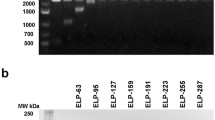Summary
Previous studies have demonstrated that Separan AP-30, a drag-reducing polymer, significantly decreased the formation of atherosclerotic plaques in rabbits fed a highcholesterol diet. Furthermore, Separan AP-273, a polymer similar to but longer than Separan AP-30, markedly increased cardiac output in open-chest rats. Preliminary studies in our laboratory have described diuresis and natriuresis following the intravenous infusion of Separan AP-273. These studies did not determine whether this natriuresis was common to drag-reducing polymers or unique to Separan. In the present study the renal effects of two chemically dissimilar drag-reducing polymers of molecular lengths approaching ∼100 microns were compared. Sprague-Dawley rats (250–300 g) were anesthetized (Nembutalx) and a tracheostomy was performed. A baseline level of sodium and water excretion was established by the infusion of saline (0.097 ml/min, IV). Separan (0.004%), an anionic polyacrylamide; Polyox (0.4%), a poly(ethylene oxide); or mannitol (20%), an osmotic diuretic, was infused into the jugular vein at 0.0034 ml/min. Separan and Polyox both increased the excretion of sodium and water (p<0.05). At the doses tested, potassium excretion was unaltered in both groups. Separan, but not Polyox, produced a modest increase in blood pressure. Creatinine clearance was unaltered. At this infusion rate, only hypertonic concentrations of mannitol (20%) induced a similar effect. These results indicate that drag-reducing polymers may represent a novel class of potassium-sparing diuretic and natriuretic compounds. The ability of this class of polymers to decrease the formation of atherosclerotic plaques, increase blood flow, and produce a potassium-sparing natriuresis may be of practical clinical significance.
Similar content being viewed by others
References
Sellin RHJ, Hoyt JW, Scrivener O. The effect of dragreducing additives on fluid flows and their industrial applications.J Hydraulic Res 1982;20:29–68.
Faruqui F, Otten MD, Polimeni PI. Protection against atherogenesis with the polymer drag-reducing agent, Separan AP-30.Circulation 1987;75:627–635.
Mostardi RA, Thomas LC, Green HL, et al. Suppression of atherosclerosis in rabbits using drag reducing polymers.Biorheology 1978;15:1–14.
Polimeni PI, Ottenbreit B, Coleman P. Enhancement of aortic blood flow with a linear anionic polymer of extraordinary molecular length.J Mol Cell Cardiol 1985;17:721–724.
Coleman PB, Ottenbreit BT, Polimeni PI. Effects of a dragreducing polyelectrolyte of microscopic linear dimension (Separan AP-273) on rat hemodynamics.Circ Res 1987;61: 787–796.
Polimeni PI, Bose D, Bose R, et al. Drag-reducing polymers: A novel category of drugs potentially useful in cardiovascular disease?J Appl Cardiol 1988;3:57–66.
Smyth DD, Blandford DE, Jones DR, et al. Separan AP-273 and renal function.Can J Physiol Pharmacol 1987;65:2001–2003.
Berman NS. Drag reduction by polymers.Ann Rev Fluid Mech 1978;10:47–64.
Greene HL, Nokes RF, Thomas LC. Drag reduction phenomena in pulsed blood flow. In: Dowdell RB, ed.Flow, its Measurement and Control in Science and Industry. Pittsburgh. Instrument Society of America, 1974:1459–1464.
Castro WE. Reduction of flow-friction with polymer additions.Water Resources Institute Report 1974;24:1–56.
Stein PD, Parsons ED, Blick EF. Modification of dynamic flow properties of turbulently flowing human blood by long chain polymers.Med Res Eng 1972;11:6–10.
White WD, Hoyt JW. The effect of linear-high molecular weight polymers on the turbulent flow properties of human blood.Proc 8th Int Conf Med Biol Eng (Chicago), 1969: 11.
Polimeni PI, Ottenbreit BT. Hemodynamic effects of a poly(ethylene oxide) drag reducing polymer, Polyox WSR N-60K.J Cardiovasc Pharmacol, in press.
Polimeni PI, Al-Sadir J, Cutilletta AF. Polysaccharide for enhancement of cardiac output. US Patent 4, 154, 922, Washington, DC. 1979:1–10.
Roman RJ, Cowley AW. Characteristics of a new model for the study of pressure-natriuresis in the rat.Am J Physiol 1985;248:F190–F198.
Author information
Authors and Affiliations
Rights and permissions
About this article
Cite this article
Symth, D.D., Polimeni, P.I. Drag-reducing polymers: A novel class of diuretic and natriuretic compounds. Cardiovasc Drug Ther 4, 297–300 (1990). https://doi.org/10.1007/BF01857648
Issue Date:
DOI: https://doi.org/10.1007/BF01857648




